How do I report a dog bite in Suffolk County? And Other FAQs
You’re walking down the street with your family. Suddenly, out of a neighbor’s yard, comes a dog. He charges you, and you get bitten. You’re not alone. In fact, according to the Centers for Disease Control and Prevention (CDC), you’re among the approximately 4.7 million people that are bitten by dogs in the United States each year. Of these victims, nearly 400,000 (17%) were bitten badly enough to require medical attention. 42% of the wounds requiring medical treatment happen to children under the age of 15 with the highest rate of injury happening to children between 5 and 9 years of age. For attack victims over the age of 16, 7.9% of their injuries were work related. Oftentimes these injuries happened to people who were going about their day-to-day work delivering food, the mail, or packages; as well as workers doing repairs, and those employed by animal shelters and clinics.
There’s a wide range of injuries that can be sustained from a dog bite. Some of the most common ones are:
- puncture wounds
- lacerations
- contusions, abrasions, or hematoma
- cellulitis or infection
- amputation, avulsion or crushing
- fracture or dislocation
Arms and hands tend to be the most common target of dog attacks, and account for 45.3% of injuries, followed by the lower extremities including the feet and legs which constitute 25.8%. Injuries to the head and neck account for 22.8%. For children aged 4 and younger, injuries to the head and neck area make up 64.9% of wounds received. Of all the bite-related injuries in older children and adults, wounds to the extremities account for 86.2%.
Whatever the age of the victim, the costs and trauma that accompany a dog bite injury can be expensive and profound. Loss of income from time off of work, medical bills, pain and suffering, and scarring can take its toll on those who’ve been attacked as well as their family members.
Helping Victims of Dog Bites in Suffolk County
Recovering from a dog bite injury can be a long and painful process. That’s why it’s important to get the counsel of the experienced Suffolk County dog bite lawyers at Rosenberg & Gluck, L.L.P. With a track record of helping people who have been the victims of bites from a dangerous dog, we are poised to help you recover compensation for your wounds. Our attorneys will draw on years of experience in handling similar cases to fight for the compensation you deserve.
Call today to speak to a lawyer to find out if you have a case. We work with all kinds of dog bite victims including:
- children bitten in the head or neck
- people bitten while working
- people harmed by a dangerous dog
- people injured while trying to flee from a dangerous dog
- people injured from being knocked over by a dangerous dog
Contact our team of Suffolk County dog bite lawyers for a free consultation, and to see if you have a case at (631) 451-7900.

Click to contact our personal injury lawyers today
How do I report a dog bite in Suffolk County?
If you or a family member has been bitten by a dog, reporting it is a necessary first step. Not only does it alert authorities to a potentially dangerous animal in the community, but it sets you up for success when it comes time to file a lawsuit. Failing to do so could jeopardize your chances of receiving a fair and complete settlement in court. By reporting your dog bite, you’ve laid down the necessary foundation for your future court case. The report you file with the authorities is your proof that the attack happened. Without this proof, your chances of receiving damages could be greatly reduced.
A recent change in New York’s Dog Bite Law makes it easier for victims of dog attack injuries to recover damages. Previously, a victim needed to show the owner had prior knowledge of the dog’s vicious propensity. In such a scenario, the owner was held strictly liable for the harm caused as a result of those propensities. Now, a victim can pursue two avenues of recovery. In addition to strict liability, a victim of a dog attack can now recover under a standard negligence cause of action, so an owner’s negligence as well as the dog’s history may be taken into consideration.
File a report of the bite to the Suffolk County Department of Health Services at (631) 853-0333.
When filing your report, try to have the following items available for the authorities:
- The dog bite victim’s name and address
- The location where the dog attack took place
- The date and time of the dog attack
- The name and any contact information you have about the person responsible for the dog
- The date of the dog’s last rabies vaccination
- Any medical treatment that you received as a result of the bite
Complete a Free Case Evaluation form now
What should I do after a dog bite?
If you’ve been bitten by your own dog, you should seek medical attention as soon as possible. When you go to your doctor, bring the dog’s medical record and inoculation history.
If it’s someone else’s dog that attacked you, or you’re not sure of the dog’s ownership, here are the steps you should take according to NYC Health:
- Get the dog owner’s contact info including name, address and phone number.
- If the dog is unknown, get information for anyone who may be able to identify the dog.
- Care for the bite wound by washing it with soap and water. Seek immediate medical attention if necessary.
- Contact your doctor for guidance on specific wound care instructions.
- Report the bite to the Suffolk County Department of Health Services at (631) 853-0333.
- If you feel that the dog poses an immediate danger or risk to you or the community, contact the police by calling 911.
If the dog that bit you was somebody else’s, you’ll need to try to determine who owns the dog. The dog’s owner should be able to fill you in on the dog’s medical history. Another important step is to collect contact information from eye-witnesses who saw the attack. Also, it’s very important that you file a report with your local department of health. By doing this, you not only help your case, but this step could very well help to track and prevent the spread of rabies. The local municipality can help. Once a dog bite is reported, the municipality works to identify the dog and confirm it is up-to-date with its vaccinations.
The other thing you can do to help your situation is to take photos and document any wound, injury or treatment needed because of a dog bite. This all helps to document and clarify the incident in the event you pursue a lawsuit.
Should I see a doctor for a minor dog bite?
It might be tempting to some to brush off a dog bite as, “only a minor injury.” This would be a mistake. According to The Association of Professional Dog Trainers, there are many degrees of severity when it comes to animal attacks. To determine the severity of a bite, they refer to Dr. Ian Dunbar’s Dog Bite Scale:
- Level 1 — Aggressive behavior by the dog but no skin-contact by the dog’s teeth. For example, the animal may bite but only make contact with clothing.
- Level 2 — Skin-contact by the dog’s teeth but no skin-puncture. This includes nicks and scrapes caused by the teeth when there are no vertical punctures.
- Level 3 — One to four punctures from a single bite with no puncture deeper than half the length of the dog’s canine teeth. There may be lacerations in one direction caused when the victim or animal pulls away.
- Level 4 — One to four punctures from a single bite with at least one puncture deeper than half the length of the dog’s canine teeth. May also have deep bruising around the wound caused by the animal bearing down or lacerations in both directions from the dog shaking its head from side to side.
- Level 5 — Multiple-bite incident with at least two Level 4 wounds or multiple-attack incident with at least one Level 4 bite in each.
- Level 6 — Victim killed by the dog.
Of the six levels, only “Level 1,” involves injury that might be considered minor enough to not warrant a visit to the doctor. Anything else should be seen to by a medical professional.
In an instance where there is no puncture visible, a simple scratch may become a serious injury should that dog be a carrier of rabies or other disease.
Can I sue if someone’s dog bites my child?
Yes, you can seek compensation under New York law if a dog bites your child. Dog bite victims can pursue two avenues of recovery. In addition to strict liability (where the owner is held liable for prior knowledge of the dog’s vicious propensity), a victim of a dog attack can now recover under a standard negligence cause of action (where the owner may be liable for negligence in preventing their dog’s attack).
In a recent Court of Appeals decision, handed down in April 2025, the Court of Appeals explicitly overturned prior decisions which precluded a negligence cause of action for harm caused by domestic animals. In short, the court now allows standard negligence as an alternative to strict liability for injuries caused by domestic animals, including dogs.
If your child has been bitten in Suffolk County, you can register a complaint with the local police and the local animal control agency.
What is the NY one bite rule?
New York follows a “one bite” rule that states that the owner of the dog is responsible for the dog bite if the person making the complaint can demonstrate that the owner knew or should have known that the dog was vicious and prone to harming others. In other words, a dog gets one free bite, if there is no other known history of viciousness, before a history of dangerous behavior can be established. However, an actual prior bite is not required, only knowledge of the dog’s ‘vicious’ propensity. This can include biting, snapping, growling, and other aggressive behaviors. A recent update to this law gives victims a second avenue to recovery and can hold owners liable for negligence in preventing their dog’s actions.
Should I report a minor dog bite?
Though your bite may appear to be minor, you should always report a dog bite to the local authorities. The complete history of a dog may be unknown. It can be difficult to determine if this was the first instance of the dog biting someone. For the safety of yourself and your community these injuries need to be documented. The single instance of the dog bite that you experienced might be a sign of a more serious problem.
Should I see a doctor for a dog bite?
Yes, it’s important to seek medical care for a dog bite. Harmful bacteria can live in a dog’s mouth, such as:
- staphylococcus
- pasteurella
- capnocytophaga
A superficial dog bite can still cause infections, rabies, nerve and muscle damage, or permanent scarring.
A deep bite may cause damage to your nerves, muscle tissue and blood vessels. This can occur even if only small puncture wounds are visible. What’s more, a dog bite from a large, powerful dog could cause chipped, broken or splintered bones below the surface of the skin.
At first glance, the injury may not appear that severe. The bite may not have appeared to break the skin or cause any real damage. Regardless, you should see a medical professional as soon as it’s safe to do so.
Another injury that can be the result of a dog attack is often overlooked. If a dog attacks someone, that person may flee and injure themselves in the process. In order to get away from an aggressive dog, someone may become injured due to their running into traffic or another obstacle in an attempt to get away from the attack.
Medical reasons aside, there’s another good reason to see your doctor following a dog bite. In Suffolk County, dog bite victims may be able to pursue a civil action to recover compensation from the person responsible for the dog and their insurance company. In order for this type of compensation to be recovered, you may have to prove that your injuries were the direct result of the dog bite. Without a proper medical exam, your attorney may have a difficult time proving that they were the result of the dog attack. Creating this paper-trail with your doctor will help your lawyer argue that your injuries were directly linked to the dog bite.
Is there a dangerous dog registry in Suffolk County?
Unlike the dangerous dog registry established by Benny’s Law in Nassau county, Suffolk County’s Animal Bites Registry code authorizes and empowers the Suffolk County Society for the Prevention of Cruelty to Animals in Suffolk County (SPCA) to maintain, at no cost and expense to the County of Suffolk, a registry of all reports of animal bite incidents forwarded to it by the Suffolk County Police Department. This registry provides information to the public and is used to verify the existence of current rabies inoculations for animals involved in animal bite incidents.
Does personal liability insurance cover dog bites?
Each insurance company is different when it comes to dog bite liability insurance. Some insurance companies disqualify homeowners with certain dog breeds that are classed as “dangerous breeds.” Other companies decide on a case-by-case basis.
Typically those with homeowners or renters insurance can expect liability and legal coverage in dog bite claims from $100,000 to $300,000, depending on the policy. Once those limits are hit, anything over that amount is the responsibility of the dog owner. For this reason it’s important to get the counsel of a knowledgeable attorney if you’ve been bitten by a dangerous dog to help determine additional insurance coverage.
Which dog breeds are excluded from coverage by personal liability insurance?
Every insurance company is different. Some insurance companies have a strict list of restricted breeds, or classifications of dogs that they consider to be dangerous. Other companies address the issue of dog liability on a case-by-case basis.
Of the insurance providers that do list specific breeds that are excluded from coverage, here’s a run-down of the breeds most commonly excluded from coverage:
- German Shepherds
- Staffordshire Terriers
- Rottweilers
- Doberman Pinschers
- Akitas
- Pit Bulls
- Alaskan Malamutes
- Siberian Huskies
- Great Danes
- Presa Canarios
- Certain Wolf Breeds
- And other Molassers (i.e., thick chested, muscular dogs)
What happens if a dog owner doesn’t have insurance?
Some insurance companies offer supplemental liability insurance for varying types of breeds and different types of damage claims. This is because some dog breeds are excluded from traditional homeowners’ or renters’ policies. Owning a dog and not having insurance is by no means a “get out of jail free card.” The dog owner still bears the burden of liability if their dog hurts someone. According to the Insurance Information Institute, there are three kinds of laws that impose liability on the dog owner:
1) A dog-bite statute: where the dog owner is automatically liable for any injury or property damage the dog causes without provocation.
2) The one-bite rule: where the dog owner is responsible for an injury caused by a dog if the owner knew the dog was likely to cause that type of injury—in this case, the victim must prove the owner knew the dog was dangerous.
3) Negligence laws: where the dog owner is liable if the injury occurred because they were unreasonably careless (negligent) in controlling the dog.
In New York State, the “one-bite rule” spells out the dog owner’s extent of liability if they knew or should have known that their dog is dangerous, and a second avenue for recovery may hold the owner liable under negligence laws. Contact the knowledgeable attorneys at Rosenberg & Gluck, L.L.P., to discuss your case.
How can I prevent a dog attack?
Guidelines set out by The American Veterinary Medical Association (AVMA) offer some important information for dog owners, families, and the general public to help prevent dog attacks and dog bites.
For families with dogs, they recommend these steps:
- Socializing your pet — By introducing your dog early and often to other people, your dog will be more comfortable, and not see others as a threat. You should also always use a leash in public and make sure that you’re exercising control over your pet.
- Being a responsible pet parent — Carefully select a dog breed that’s right for you, your family, and your life. When selecting a breed, keep in mind your living situation, surroundings, family members, and daily schedule. Also, invest your time in proper dog training and make sure your pet has regular exercise. This point also includes getting your dog spayed or neutered.
- Educate yourself and your family about how, when — or whether — to approach a dog.
To help keep yourself or a loved one from being bitten, the AVMA suggests not approaching or petting a dog in these scenarios.
Do not approach a dog if:
- the dog is not with its owner
- the dog is with its owner, but they do not give permission to pet the dog
- a dog is sleeping or eating
- a dog is sick or injured
- a dog is resting with her puppies or seems very protective of her puppies and anxious about your presence
- a dog is playing with a toy
- a dog is growling or barking
- a dog appears to be hiding or seeking alone time
One final point is to pay attention to the dog’s body language. Watching a dog’s posture and behavior can oftentimes give you an indication if the dog is stressed or uncomfortable with your presence.
What happens if your dog bites someone in NY?
In New York State, if a dog, through negligence, is permitted to bite a person, and that injury is deemed serious, the person responsible for the dog can be convicted of a misdemeanor ($3,000 fine and 90 days in jail). This is all over and above whatever civil penalty is levied against the owner of the aggressive dog.
If a dog that’s previously been determined to be dangerous gets out and kills someone, the owner then can be convicted of class A misdemeanor in addition to any other penalties and civil liabilities.
Can I get compensation for a dog bite?
In Suffolk County and the state of New York, a person who’s been attacked and bitten by a dog may be entitled to compensation. There are 3 defenses that dog owners can usually argue successfully on. The exceptions are:
- The dog was acting to protect them or their property from trespassers or individuals committing a crime.
- The dog was being tormented by the person they bit.
- The dog bite was a reaction to pain or its instinct to protect their person, their family, or property.
Lastly, it’s important to note that police dogs are exempt from liability if they bit someone when they were engaged in their official duties, such as a police dog.
Who is liable in a dog bite incident? Can a Suffolk County dog bite lawyer help me?
New York law stipulates the following: If the owner of a dog allows their dog to bite another person or animal, and that owner’s behavior is seen as negligent, and the bite results in harm to another person or animal, then the owner of the dog is subject to a civil penalty not to exceed $400. That amount is in addition to any other applicable penalties.
For many, four hundred dollars doesn’t begin to cover the expenses that go along with being hurt in a dog attack. The attorneys at Rosenberg & Gluck, L.L.P., understand New York’s “one bite rule.” By enlisting the services of a firm that genuinely understands the laws that cover dangerous dogs, you greatly increase the chances of receiving a favorable outcome in your case.
A dog bite is no small thing. An aggressive dog can be a danger to you, your family and your community. Suffolk County’s dog laws are complicated, and it takes an experienced legal team to help make sure that you can receive the maximum amount of compensation. Contact the experienced attorneys at Rosenberg & Gluck L.L.P., today to receive your free consultation.
Call or text 631-451-7900 or complete a Free Case Evaluation form







